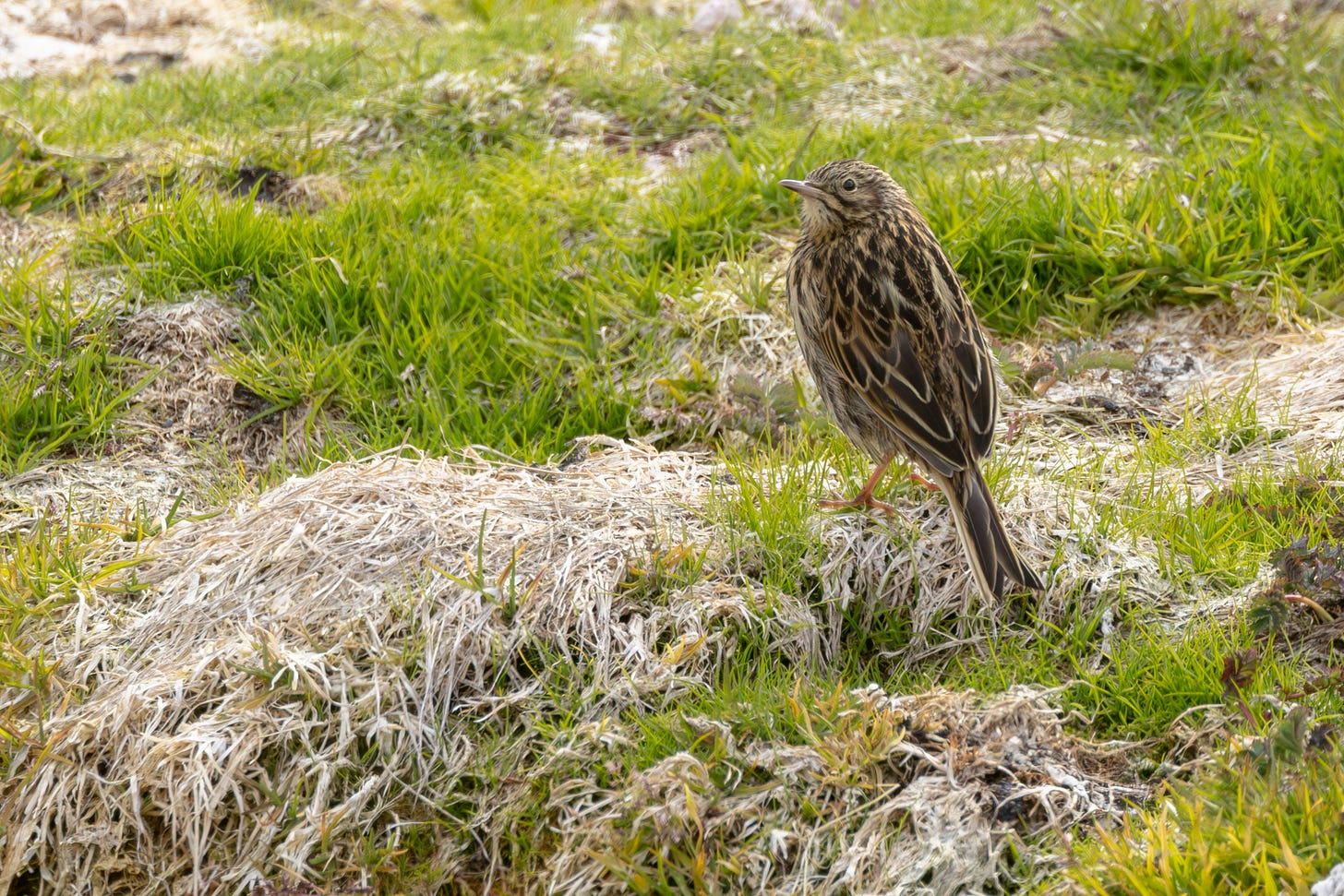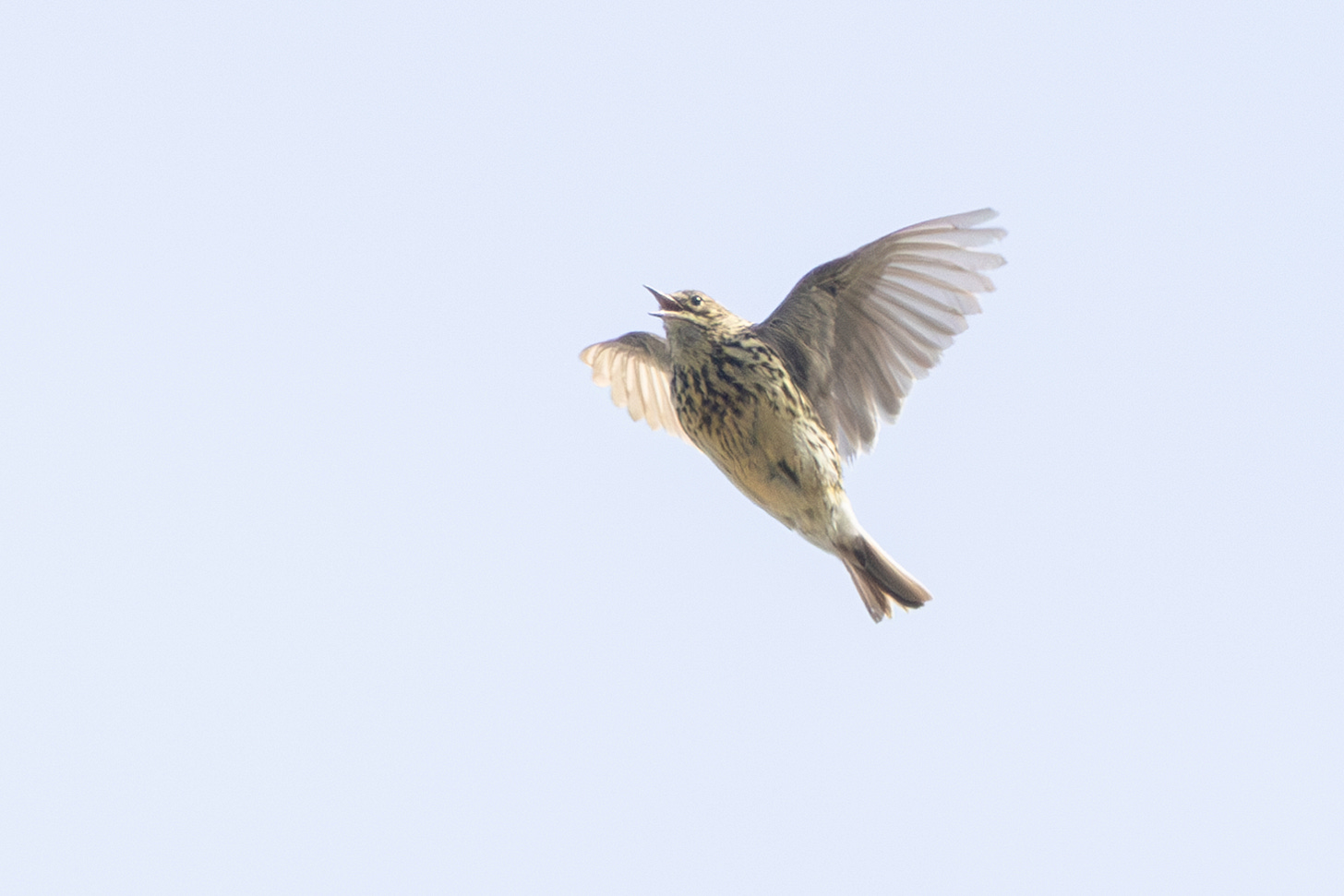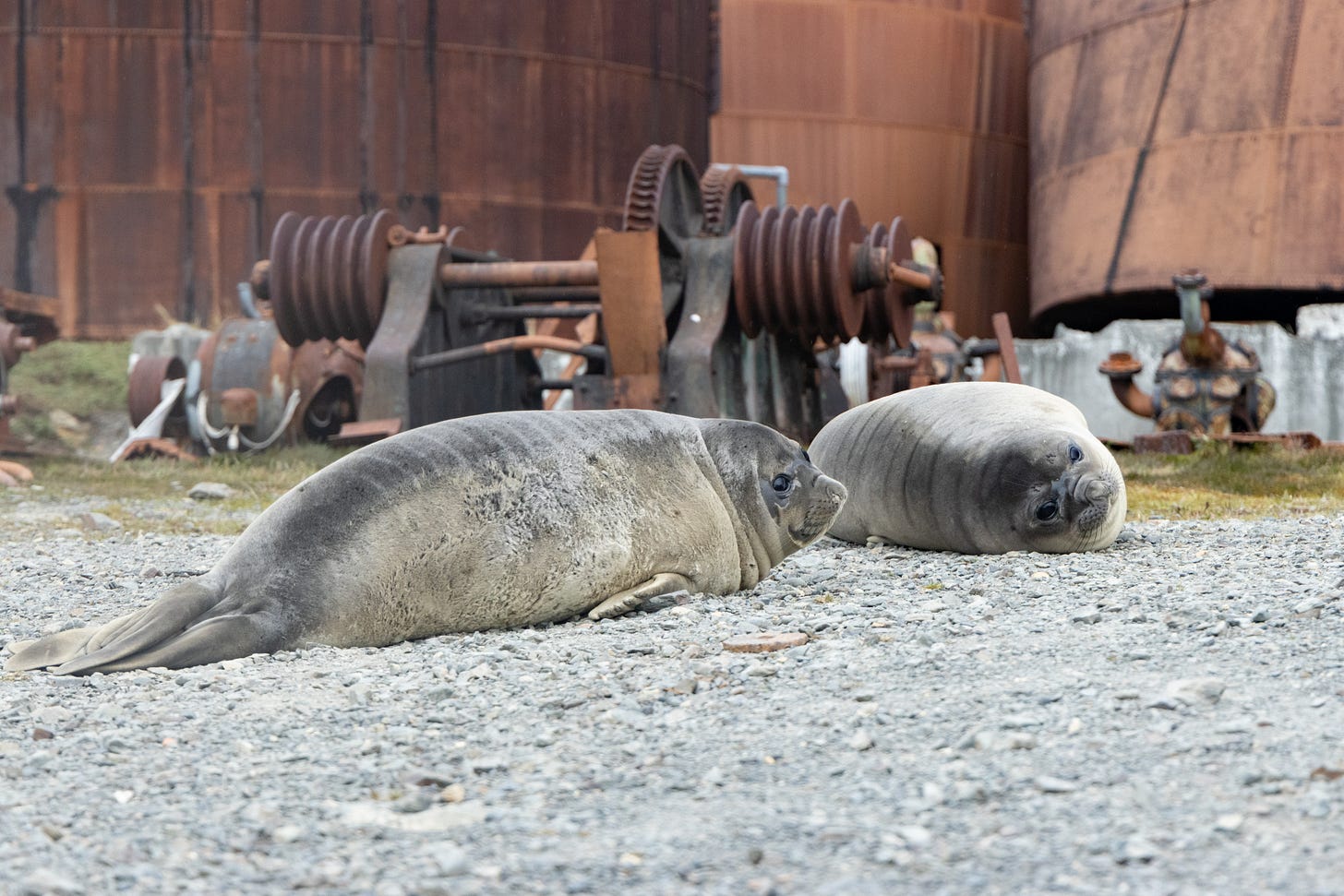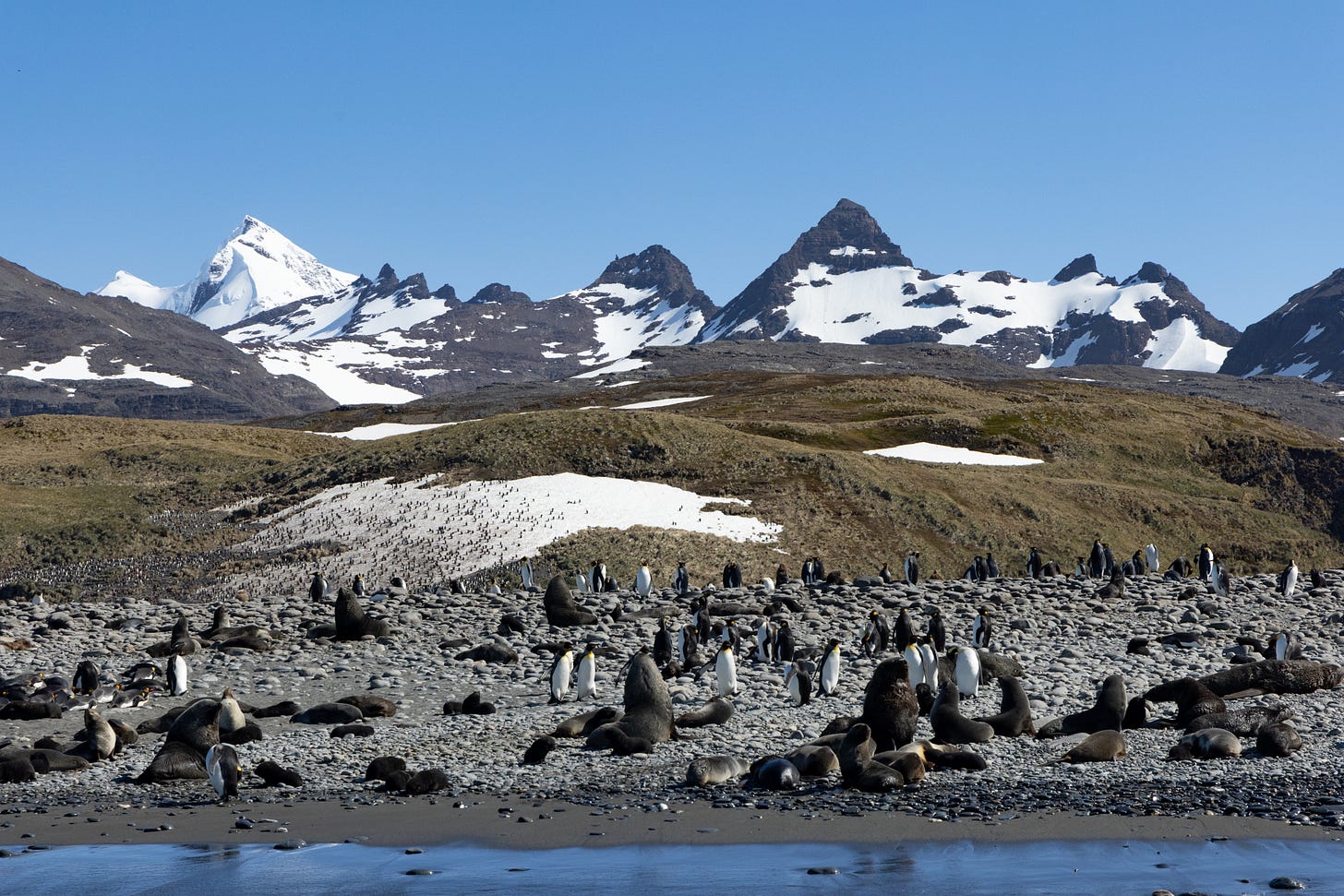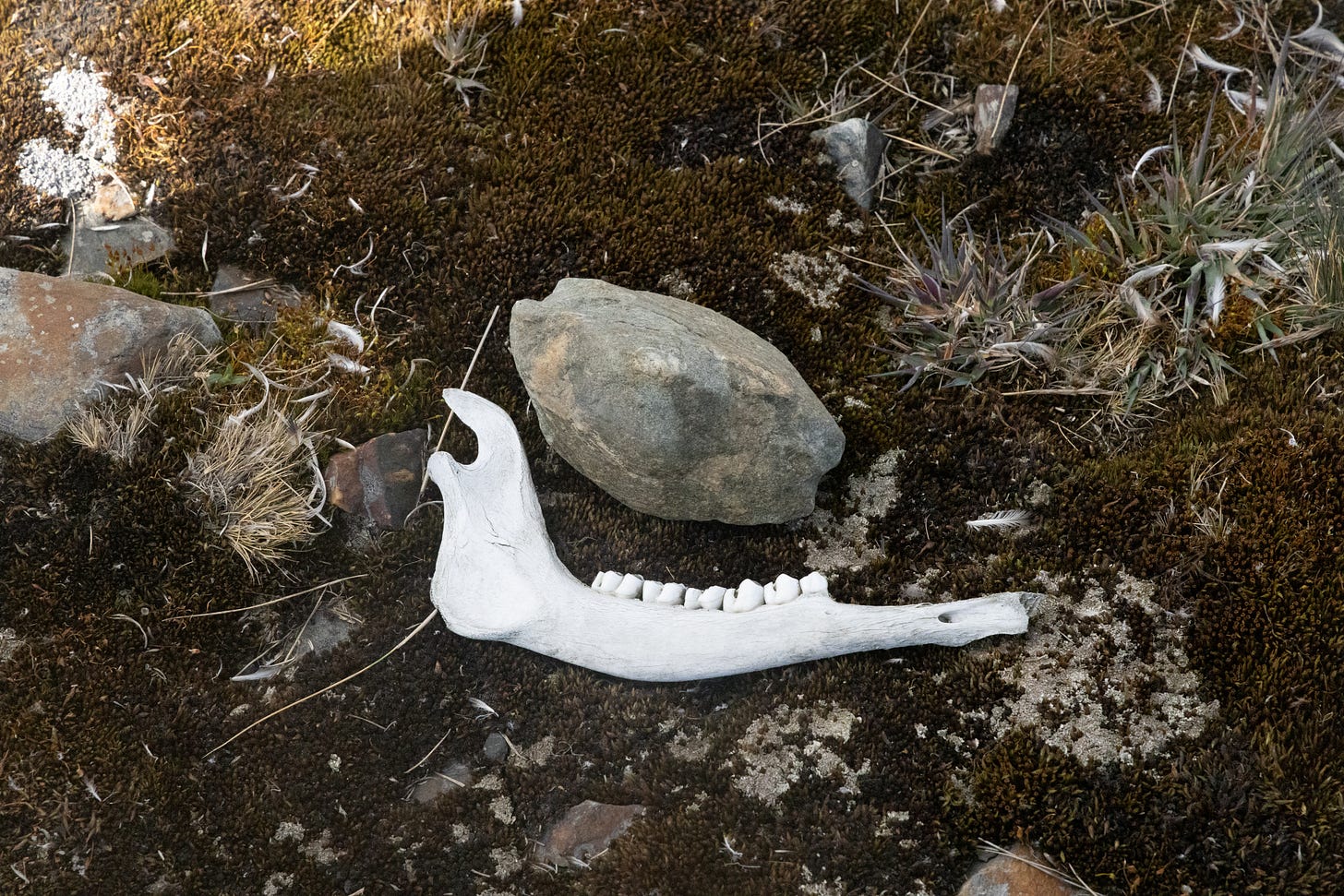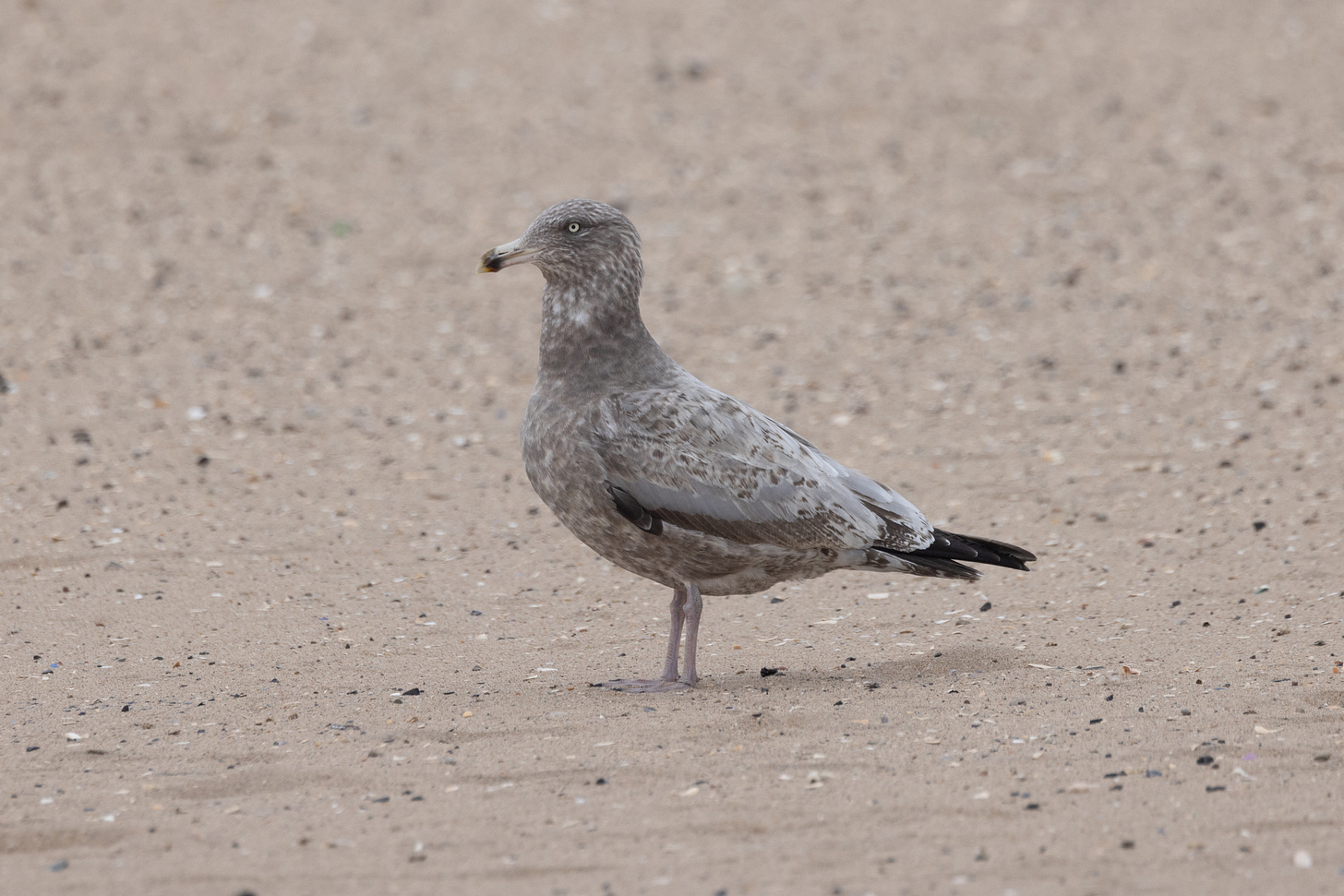a long island-sized sliver of glacier-capped rock rises nearly 10,000 feet above the southern ocean, as if someone had misplaced the alps at sea. millions of penguins and seals inhabit its shores; it feels like animals cover basically every surface. the scenes here on south georgia left me slack-jawed—but it was amid the human-sized tufts of tussock grass dotting the island’s slopes where i found hope for planet earth’s future… in the form of a boring brown bird called the south georgia pipit.
south georgia pipits had stopped breeding on all but the most inaccessible rocks surrounding the island, falling victim to the abundant rats that arrived with whalers in the 1800s. but beginning in 2011, a nonprofit called the south georgia heritage trust undertook the world’s largest rat eradication campaign. today, the pipits are returning to breed on the mainland, where they and other threatened seabirds once again have a chance to breed without the threat of being killed by rats. in the face of innumerable human-caused threats to wildlife, i tell myself, humans can fix things if we try.

south georgia is a home base for animals taking advantage of the productive southern ocean. here, phytoplankton thrives since cold water holds more carbon dioxide and oxygen than warm water, antarctic summers provide long days for phytoplankton to photosynthesize, and the island’s rock offers important inorganic nutrients. immense swarms of krill feed on the phytoplankton, in turn feeding whales, seabirds, and seals. these creatures can then take refuge on the island to raise their young.
every scene ashore south georgia could be an attenborough-narrated spectacle. king penguins gather on flats by the hundred-thousand, trumpeting, whistling, and flapping their flippers (occasionally in hilarious slap-fights). millions of macaroni penguins blanket the grassy hills, journeying up rocky sea cliffs to their nests in awkward hops. stinky fur seals squabble and chase each other on the beaches, stumbling over molting elephant seals giving fart-like grunts as they nap. and during austral spring, the streaky, robin-like south georgia pipits flutter high above the din singing a consonant tune to delineate territory and woo potential mates.
but such abundance naturally attracts humans. british merchant anthony de la roché was first to sight south georgia, and it was the infamous explorer/cartographer captain james cook and his crew who first landed there. but the whalers and sealers were especially drawn to the abundant life on and offshore the island. eventually, they set up whaling stations dotting the shores. today, most people know south georgia from the story of ernest shackleton, who successfully rescued his entire crew in 1916 after losing their ship, the endurance, to the crush of antarctic sea ice. he sailed with five other men in a small lifeboat across 800 miles of treacherous ocean to south georgia, and upon landing there, three of the crew hiked over the island’s ice-covered mountains to find help at the stromness whaling station.
whalers decimated the island’s wildlife, hunting so many whales that they abandoned the island in 1966 because there were too few remaining to make a profit. they left behind a host of species introduced intentionally and unintentionally, but no animals caused as much harm as the reindeer, rats, and mice. the reindeer defoliated the island of its tussock grass, which provided shelter for seals, seabirds, pipits, and a cute little duck called the south georgia pintail. the rats and mice were even more insidious, feasting on ground-nesting birds directly. according to one paper: “the [south georgia] pipit rarely if ever nests in rat-infested areas.”
the rats and reindeer endured for nearly five decades after the whalers left. ground- and burrow-nesting birds held out mainly on the island’s southern coast and off shore islands, blocked from the rat-infested parts by glaciers. but glaciers retreating due to climate change became a time bomb, worrying conservationists that rats would soon be able to access the island’s entirety. and the outlook didn’t look good—according to that same 1980 paper, “no management procedures would be possible.”
the invasive species and their impacts persisted into the 21st century, until a former commander of the british forces in the falkland islands named david nicholls came along. nicholls began leading mountaineering tours to the island and worried about the future of its wildlife, but didn’t think the south georgia government would have the funds to protect it. so in 2005, he co-founded the south georgia heritage trust with dundee university professor elaine shemilt. its two-part mission was to conserve the island’s breeding wildlife and preserve its historical heritage.
what followed was the largest rodent eradication effort in the history of wildlife conservation. the south georgia heritage trust raised £10 million in donations and grants to finance the so-named habitat restoration project, kicking off the project in 2011. in three phases, they dropped many tons of poisoned bait across the island. in 2013 and 2014, trained rangers scoured the island to corral and slaughter or hunt all of the invasive reindeer, salvaging what they could for meat. in 2017, three rat-sniffing dogs and their handlers surveyed the entire island, covering over 2400km (1500 miles). in 2018, south georgia was declared rat-free.
the south georgia heritage trust and government continues to remain vigilant—all incoming boats must be inspected by rodent-sniffing dogs, while visitors receive biosecurity briefings and must follow strict rules, like no sitting or kneeling, no approaching wildlife, and no putting objects on the ground. we had to scour all of our clothes for hitchhiking seeds and scrub our shoes with the biocide virkon to stop the spread of any viruses, bacteria, or fungi. all shipments are strictly regulated and inspected to stymie any future invasions.
and it seems to be working. today, pipits, pintails, and burrowing seabirds are returning to sites once vacated from the rats. at the godthul bay in the center of the island’s east coast, we encountered at least seven birds perching on tussock and serenading us from high above—and we saw a baby pintail chasing its mother.
rats and reindeer were just one problem facing the island’s wildlife, of course. long-line fishing threatens albatrosses across the southern ocean, while krill fishing, especially exploitative unlicensed krill fishing, threatens the balance of southern ocean food webs. climate change is causing glaciers recede, and ice-loving animals like snow petrels may abandon south georgia entirely should it get too warm. finally, bird flu is killing seals and seabirds alike, its impacts made clear by strange-acting animals and corpses littering beaches on our visit.
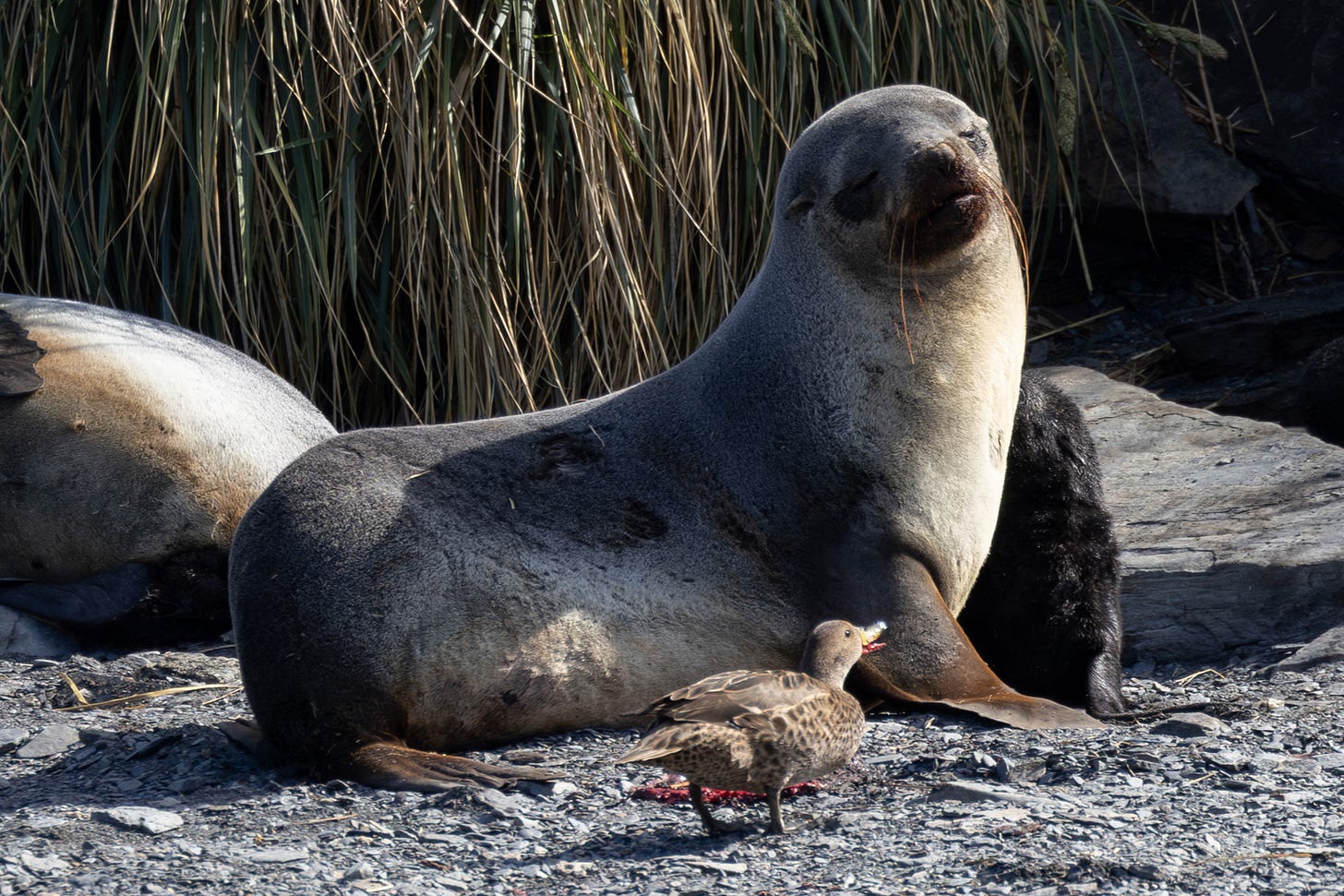
and yet—we fixed the island’s rat problem for just £10 million. like… someone just bought the run-down three-story new york city apartment building i used to live in for a quarter of that. people have purchased watches for more than £10 million. if i had purchased enough bitcoin to buy a fake id in college and forgotten about it, i today i would have enough money to finance a similar campaign. you could finance it for 15 cents from every british citizen.
it’s hard to think about the natural world’s future without despairing. but then i think of the rats on south georgia. maybe i sound naive, but humans turned the tides on threatened species with a few helicopters, a few dogs, and some rat bait. and so i tell myself: we can fix a place if we try!
postscript:
book!!! soon!!! i am currently planning a few nyc events to promote my book wild nyc which you should consider attending, including an irreverant nature drawing and writing class, panel discussions, and more. you’ll hear about it here, of course. in the meantime, please preorder it!!!
this weekend is one of my favorite days of the year: gullentine’s day!!!! join us on saturday at 10am for a lover’s stroll along sheepshead bay—we will look at all of the seagulls and tell them how much we love them. we have previously encountered uncommon nyc gulls like the iceland gull, lesser black-backed gull, and black-headed gull on this trip, so i’m hoping we find something cool!
below is a picture of a very weird gull from i encountered last week. it is the common new york gull species, the herring gull. what seems to have happened is, first, it’s just eaten something, so looks very fat, and second, it has something weird going on with its feathers. this bird was born two years ago. usually gulls begin getting their adult-colored feathers on their backs, but this one instead has just a stripe of adult feathers along its wing. is eyes are already striking white, but would usually still be dark in this age. weird!


